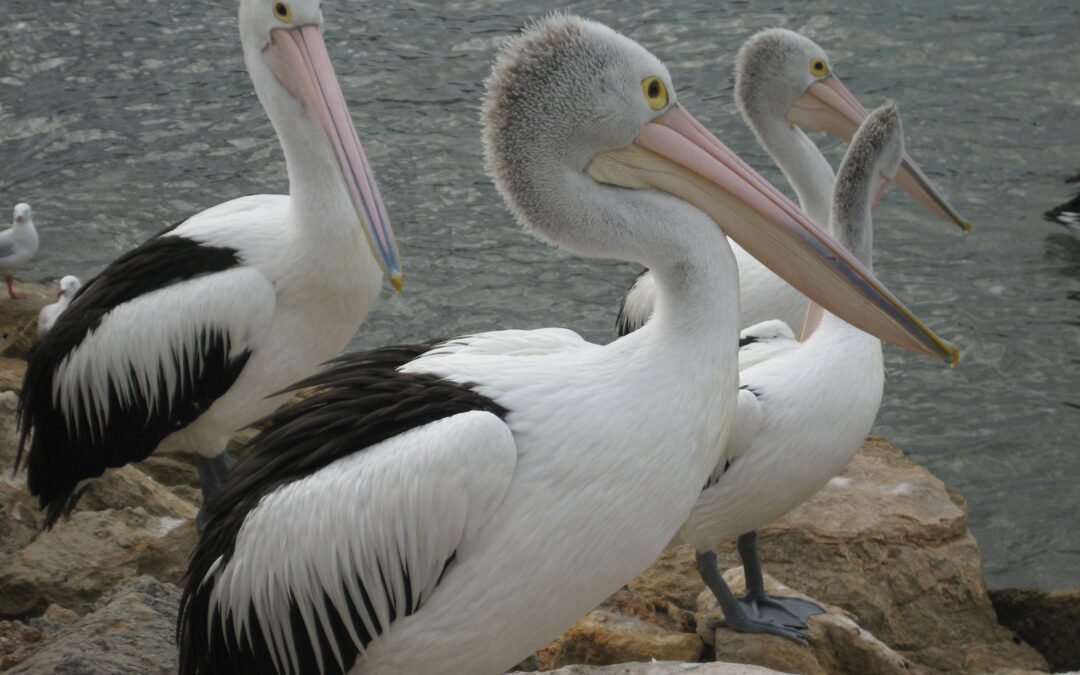SATURDAY 3/27/2010 – KANGAROO ISLAND >> ADELAIDE
We ate breakfast at Aurora Ozone. Unfortunately, the menu in the restaurant is only half of what is posted in room. If you order Macchiato, you’ll get a ½ shot glass. Profiteroles are ice cream filled cream puffs with Kahlua chocolate sauce.
The bus arrived to pick us up for Day 2 of exploring Kangaroo Island when I realized I left my camera in the room. Luckily, I was able to run back and get it before the bus left.
Aboriginals Dreaming Place = between death and heaven
The first stop on our Sealink Remarkably Wild Day Tour was Clifford’s Honey Farm.
Over 10,000 kg of honey is produced on the farm each year by the quiet, docile Ligurian bees. Before the 1880’s there were no honeybees on Kangaroo Island. They originated in Liguria, Italy, and were imported to Kangaroo Island between 1881 and 1885 with the intention to breed them and provide a source of purebred queen bees for the beekeeping industry. In 1885, the South Australian Government proclaimed Kangaroo Island a bee sanctuary and no more importations were made. Since the island is out of range of bee flight from the mainland, it’s the only place in the world where a pure strain of the Ligurian bee exists. The queen bees are exported around the world, and are sought after by beekeepers because they’re easy to work with and produce a large quantity of quality honey in a wide range of flavors. Honey is produced from the many varieties of eucalyptus trees, tea trees, bottlebrush, banksias, canola, and other plants. The different honey flavors are achieved by moving the hives into areas as different plant species come into bloom. Honey can be harvested at approximately 3-week intervals and hives are moved every 6 to 8 weeks.
After we toured the honey room watching the bees in their glass hives and the honey extraction process (it was fascinating and stinky), we tasted several flavors produced at the farm, including a sparkling honey beverage and honey ice cream. Somebody asked, “was that plastic – or a bee wing – I just swallowed?”
After our visit to Clifford’s Honey Farm, we went to Kelly Hill Caves. A parks interpretive officer led us underground to view the cave system and limestone formations – stalagmites, stalactites, helictites, and phallictites (what???) “Did you enjoy that?” he asked Lexie while pinching her arm. Awkward!
We ate a two-course Australian country style lunch at Beckwith Farms. After lunch, we went to Flinders Chase National Park, which covers almost 17% of Kangaroo Island.
Remarkable Rocks were truly remarkable! We climbed and explored the cluster of huge granite boulders, that were carved over many centuries by the wind and ocean spray into weird and wonderful sculptures perched on a granite dome rising steeply from the ocean.
Admirals Arch boardwalk led us down a rugged cliff face to view the spectacular natural arch formed by erosion from the pounding sea. It was very windy! This area is the breeding ground for a colony of New Zealand Fur Seals, which we saw frolicking in the water and on the rocks under the Arch.
On our short stop at the Flinders Chase Visitor Center, I bought three boomerangs.
The bus took us back to Kingscote Wharf where we watched pelicans fly into the rocky beach near Penneshaw Hotel to be hand-fed freshly caught Kangaroo Island fish. Pelicans have no manners! It was a sloppy mess, but a fun experience! In addition to the pelicans among the human observers, seagulls landed on the Pelican Man’s hat.
Richard drove us back to the ferry. Like always, he forgot to put his seatbelt on . . . Beep! Beep! Beep! Beep! Beep!
We had cheese, crackers, and wine on the 7:20pm – 8:20 pm ferry ride back to Adelaide. From there, we took the two-hour bus ride back to the Hotel Grand Chancellor. We arrived there at 10:30 pm.
All in all, our 2-day trip to Kangaroo Island gets two thumps up!
Click here to read Australia – Day 10.

0 Comments